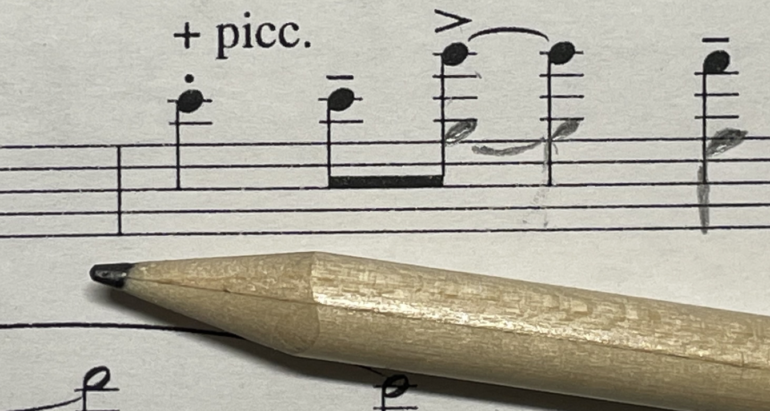
How do you adapt, arrange and compose for multiple levels at once?
Ensure that you give more achievement tasks to the musicians by giving and adapting parts that are within the registers of those in front of you!
This article presents multiple options for how you as a director or instructor can adapt your music to your musicians.
As a band director, you will often be standing in front of a group with a wide range of ages, different levels, many different instruments, and a varying composition. Furthermore, the musicians will have different learning conditions, different developmental paces, different strengths, and different interests. As the musical leader of a band, there will therefore be a need for a repertoire and approaches that include many different people, instruments, and levels at once.
It will be easier to get more musicians to experience achievement and development by making thoroughly considered choices with regard to your repertoire and methods.
Many of the tips in this text are just as relevant whether the musicians are learning music by ear or with the help of sheet music. If the musicians are playing by ear, then they can play more advanced rhythms than if they are reading sheet music, but challenges related to register are often the same.
Regardless of how you choose to adapt it for your musicians, it is important that they feel they have a natural and useful role in the music.
Always start thinking of the musicians you have when adapting music. This overview, reprinted with the permission of Roine Jansson and Notfabriken, can serve as a guideline when writing music with considerations for the range instrumentalists with different experiences may have. It is important to note that children in Norwegian bands often start as early as age 8. They do not have the same motor skills, and may therefore not necessarily show the same development as a 10-year-old. This overview is written in a sonorous range as it would be presented in a score in the key of C:
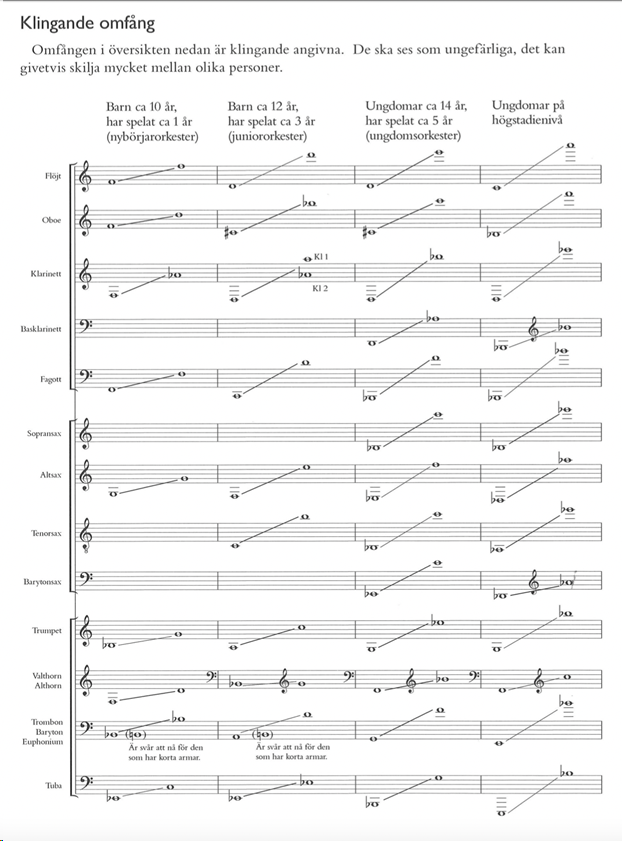
Jansson, Roine (2006) p.110. Konsten at skriva enkelt för unga instrumentalister (“The Art of Writing Simply for Young Instrumentalists”). KMH förlaget & Notfabriken.
The instruments need parts with different tunings:
C – Flute, oboe, bassoon, tenor trombone, bass trombone, baritone, euphonium, tuba, and melodic percussion. These will chime as described in the overview.
Bb – Bb clarinet, bass clarinet, soprano saxophone, tenor saxophone, Bb trumpet and flugelhorn, as well as trombone, euphonium, baryton, and tuba in brass bands.
Eb – Alto saxophone, baritone saxophone, alto horn and Eb cornet (brass band)
F – French horn
There are many ways to adapt parts in a manner that gives the musician a greater ability to master the music, or that can give musicians a greater challenge.
You must always consider whether the sheet music is good for the musician to read. Sometimes it may be important to write out a new part, even if there are only minor changes, so that the notation is easier to read for the person in question.
Further into this text, there will be examples of some simple and efficient ways to adapt parts.
Use parentheses
The easiest way to adapt a part is to put parentheses around bites that the musician is not expected to master at their current level. This way, the musician can prioritise learning the parts that are within their range, follow what is happening, and have the opportunity to practice playing what they find challenging.
In some pieces, and for some musicians, such notation may seem chaotic. In this case, you must write the part again, keeping only what the musician will play.
Example:
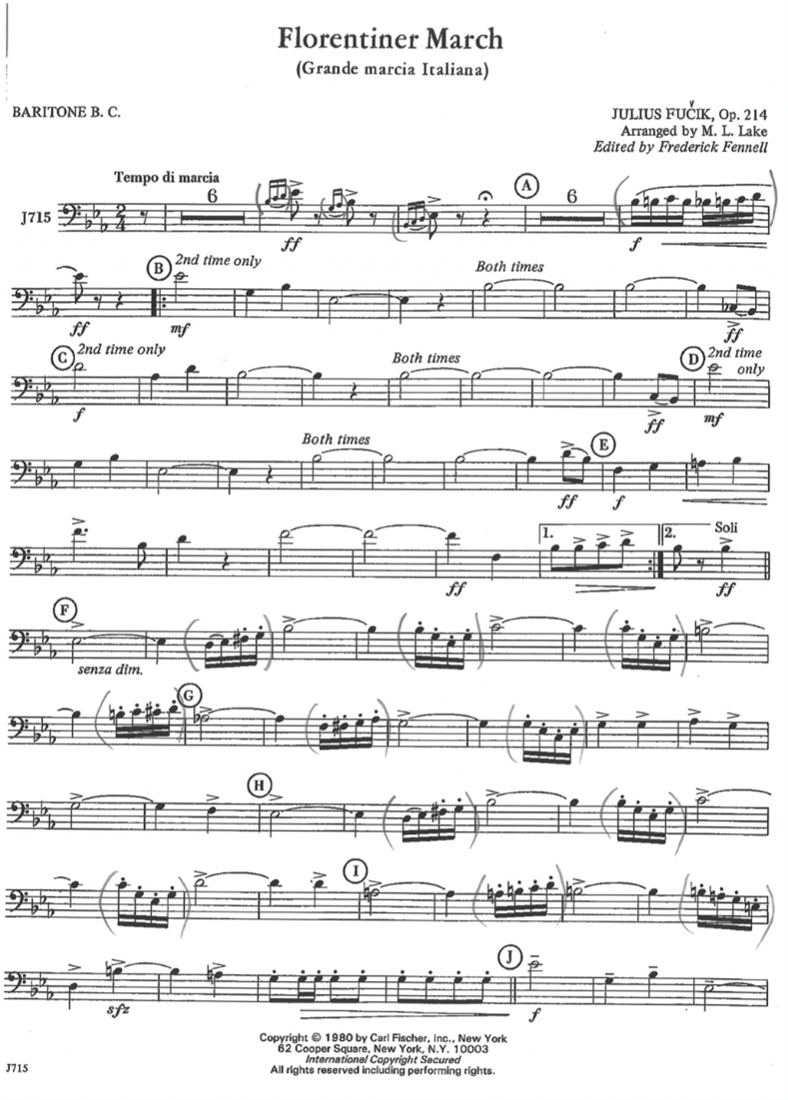
Prioritise important tones
Some tones are more important than others to include in the music. Prioritising these tones can give the musicians a complete experience of playing along with the whole piece, even if they do not play everything. Here, you may consider drawing circles around the most important tones that the musicians should try to include. This may be a combination of what is possible to achieve for the musician and the tones that are the most important in the piece. When choosing these, it is also a good idea to make sure the part feels natural to play and that it fits the overall balance of the piece, rather than having the musician play all the tones they can handle.
Example:
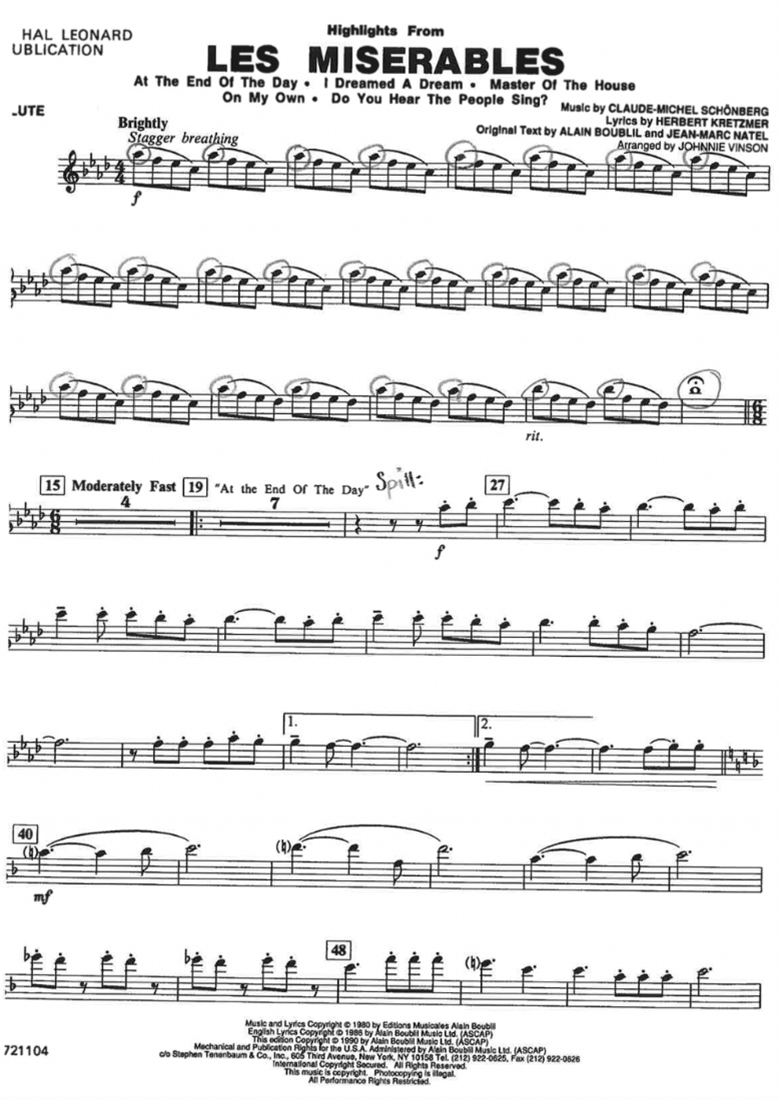
Adapted/simplified register
The musicians often face challenges involving register. In some cases, it may be a solution to change the octave of the part. It will likely be the most natural to only change the octave of certain tones, or to shift certain tones to others in the same chord (which you can find in other parts in the same key). It may be demanding to read a voice with multiple tones on top of each other. For this reason, it is important to write the part again using tones the musician can master.
Example:
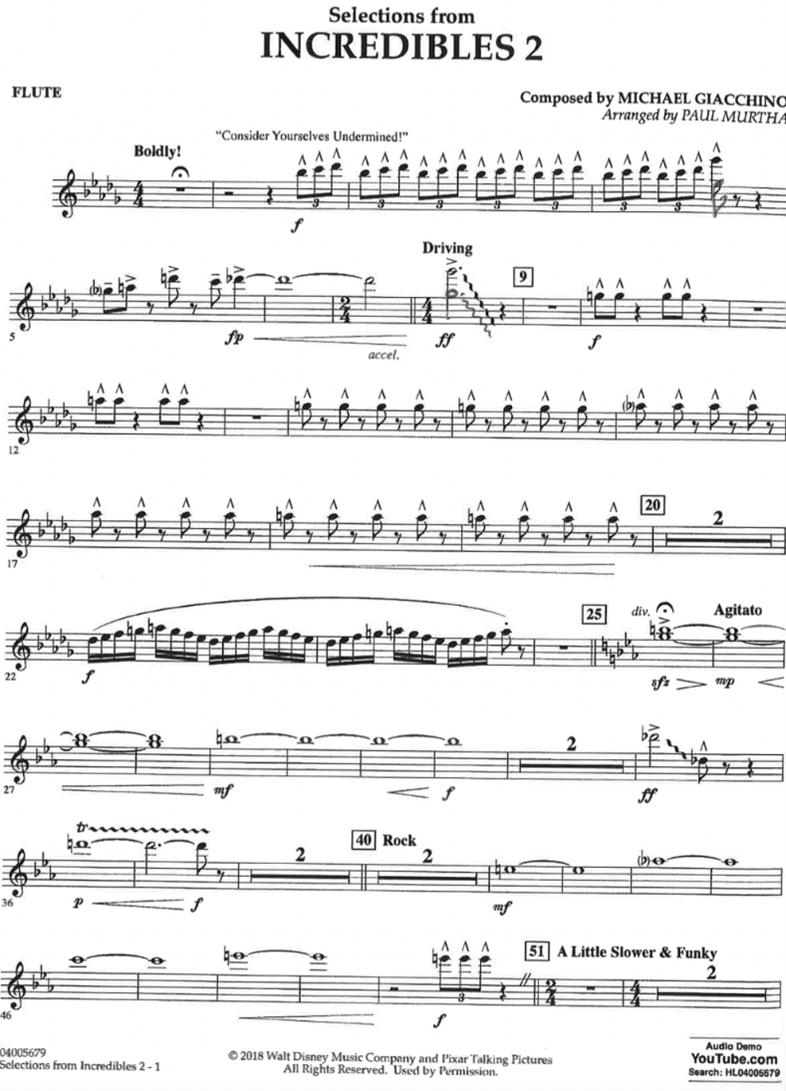
To give musicians a greater challenge, one adaptation may be for them to play the part in a different octave. This may fit a practice situation, but it may not always be a good solution for the overall sound and balance of the ensemble.
Change rhythm
Sometimes, the challenge may lie in the rhythm being too advanced to read, or that it is at a faster tempo than the musician can handle in terms of motor skills. In some works, the composer or arranger will already have taken this into account, like this example from Crown Point March by Bruce Person, which features two snare drum parts.
Example:
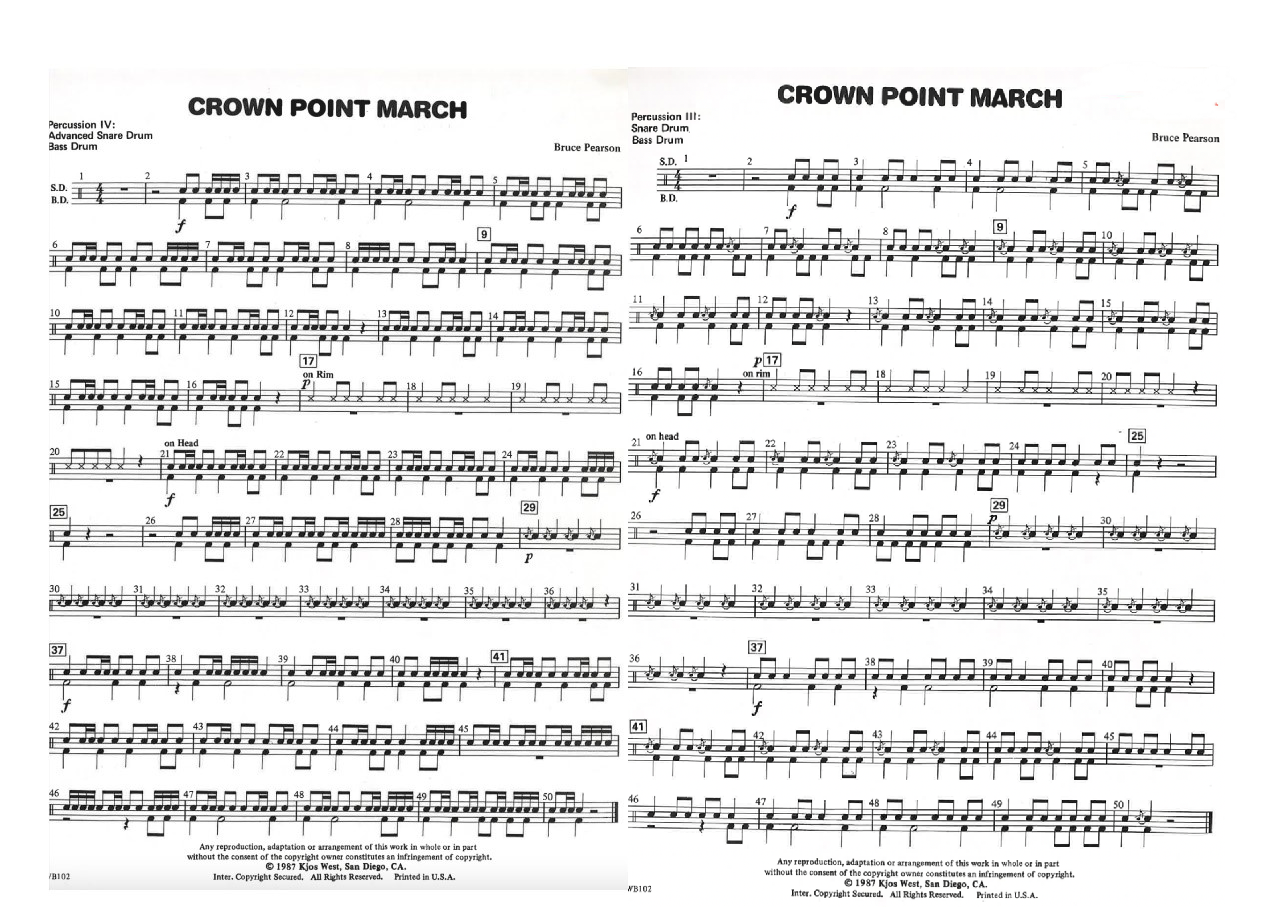
If the musician needs further challenges, one solution may be to make the rhythm more advanced.
Assign a different voice
There may be parts for other instruments in the piece that may suit a musician who needs a different part. If a flautist needs a simpler part, the oboe part may be the solution. If the clarinettist needs a part with a smaller range, you may find something in the 2nd and 3rd trumpet.
Combing different parts
Combining two or more parts is a solution to simplify, increase challenges, and cover up sections that are weaker or that have fewer people. Writing a new part will be important here. Jumping between different parts are demanding. This also applies to percussionists who often have to cover multiple parts.
Example:
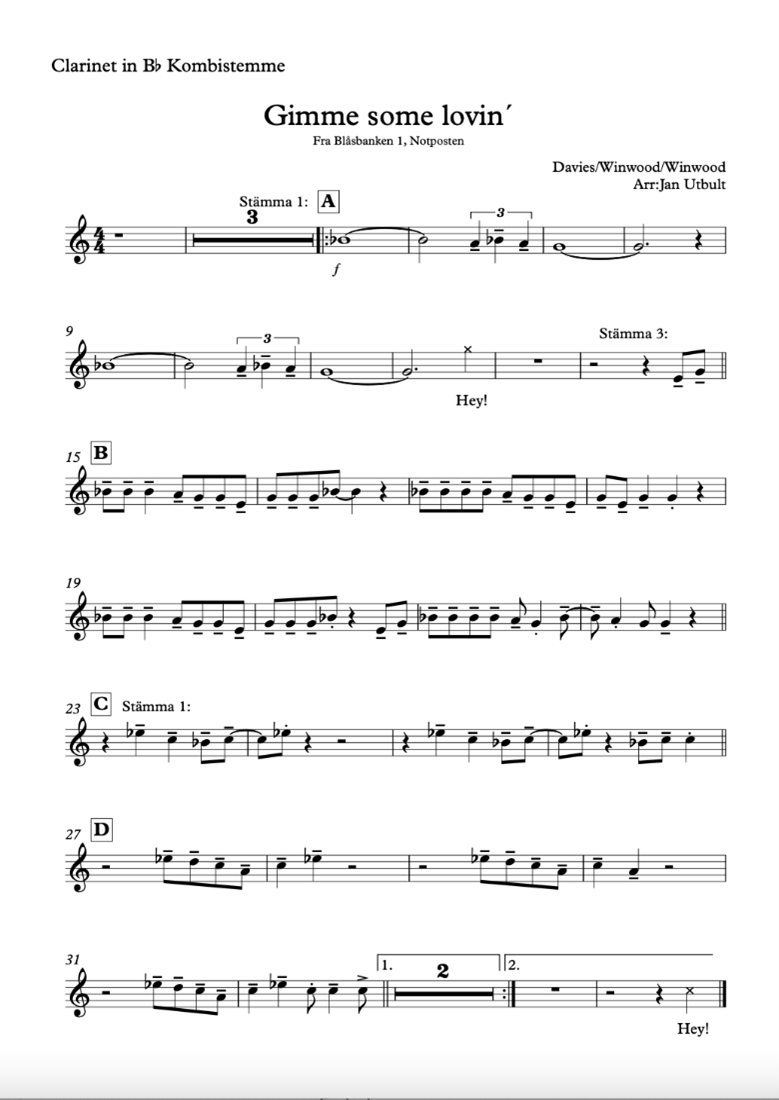
Pieces that cover multiple levels will have parts within each instrument group that are written for different levels. If you write music yourself, this may be a good way to adapt for multiple levels early in the composition or arrangement process.
Grade system and pedagogical compositions
Music from, e.g., American publishers, follow a specific system for how music is written for different grades. For this reason, there is often a natural difference in levels with regard to the scope of the 1st, 2nd, and 3rd parts within an instrument group. The structure of the grade system differs by country and publisher. Norway does not have an equally thorough and clear system, as can be seen in this overview:
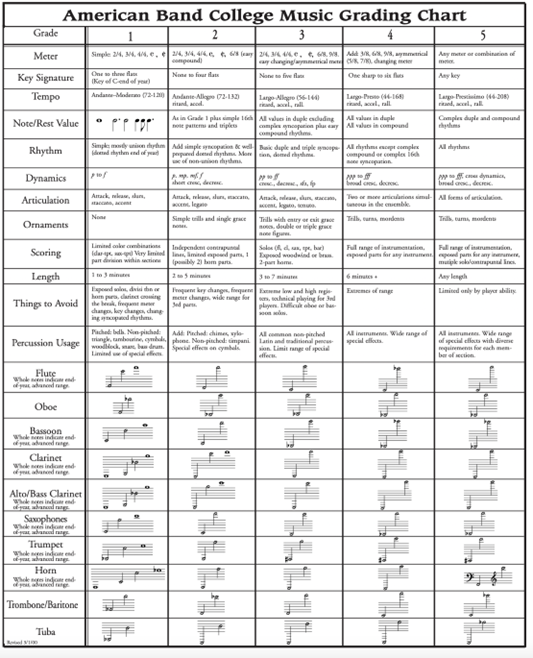
Source: http://www.bandworld.org
Alternative parts/super-parts
A simple solution for including more people in group performance involves making a near-unison part for all instruments based on the note materials in the piece. This can be a good solution if prospective members/younger members want to play with the main band, or for the less experienced members of the main band. Some pieces feature this kind of super-parts. The levels of these parts vary from piece to piece.
Example:
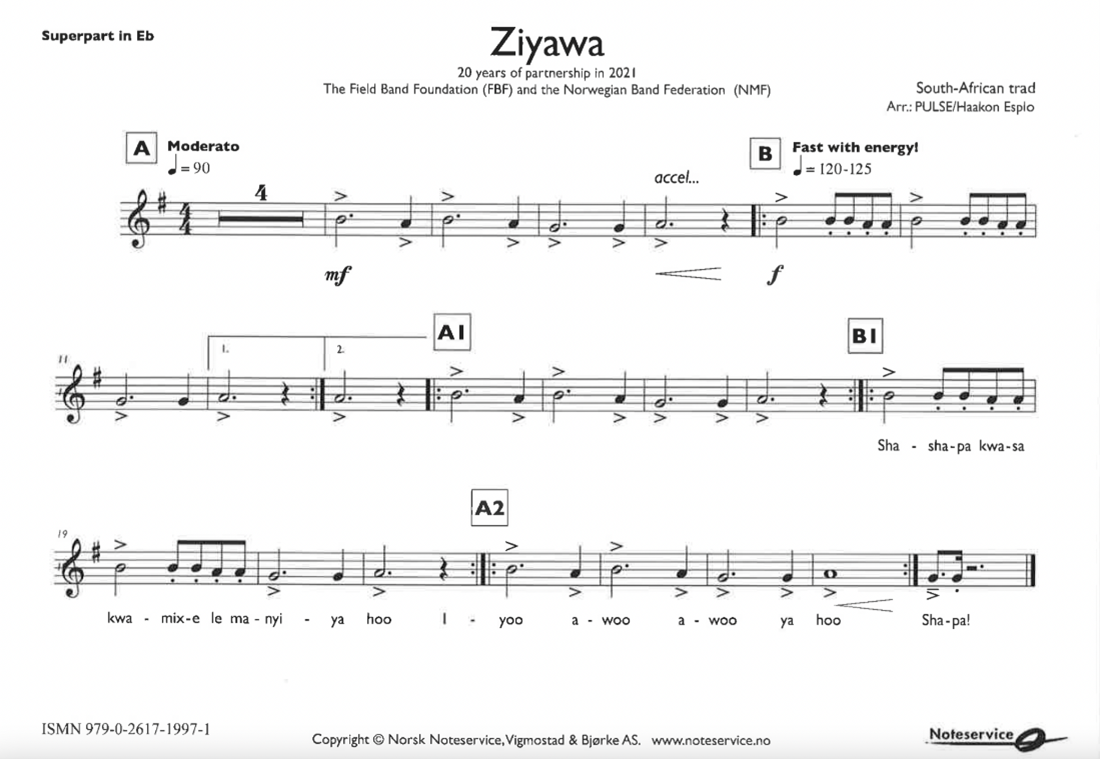
When making these super-parts, it will be a good idea to prioritise playing in sections and bits of parts that are prominent in the music. For areas of the piece, you can add breaks or other tasks such as performing other motions.
For brand new musicians, it will be very helpful if the contents of the parts have repeats, have a clear form, feature a gradual introduction of parts with a smaller scope, and if the part has a natural, organic feel. It will often be beneficial if the parts for prospective members are easy to play by ear. For some pieces, it may be appropriate to make a repeating ostinato for prospective members. If the prospective members are playing by sheet music, a spacious layout with big notes will be the most appropriate.
“Everyone plays” parts
Norges Musikkorps Forbund has developed pieces for bands that include parts for participants without band and instrument experience. These parts have been termed “Everyone plays” parts (“Alle spiller-stemmer”) and may for instance include parts written for sounds made using the body, voice, motions, pBuzz, boomwhackers, and percussion instruments. These parts are learned by ear. This lets everyone actively participate in the music, including the audience.
Example:
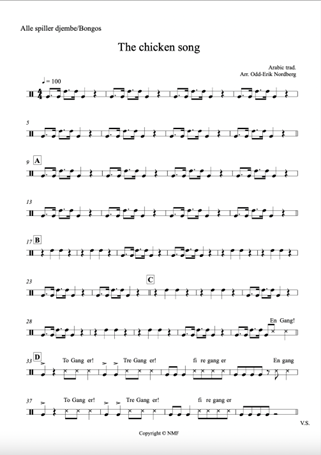
See, listen, and use the music: https://musikkorps.no/alle-spiller/
Different arrangements of the same piece that work together
There are pieces that are specially written for different levels and that can be used both on their own and together.
Here are some examples:
“Ja, vi elsker” arranged by David Hveem comes in two versions. In addition, there are melody voices for all instruments, allowing you to easily find solutions with the musicians you have on hand: https://www.dropbox.com/sh/lz2zrltsxp1z2jl/AABQcuryh6MQpUuLBLb3qRGta?dl=0
New Kids on the Block by Haakon Esplo is written as a Flex 4 version and a full version. In this work, the prospective and younger members are soloists. This makes the piece a good example of one and the same piece working for all levels together. https://musikkorps.no/new-kids-on-the-block-tilgjengelig-verk-for-korps-med-aspirantsolister/?tab=flex-4—lydfiler-og-noter
When adapting music, it is of course important to adapt in a manner that allows everyone to experience achievement, but it is also important to give every musician a challenge.
Here are some examples of measures to use to give a challenge to musicians who have the capacity for it:
- Learning more parts during rehearsal.
- Receiving more tasks and expecting more from them, musically, than the others.
- Learning their part by heart/ear.
- Supporting other groups when rehearsing.
- Make parts more advanced by changing rhythms or filling out with passing tones.
- Making an obbligato part.
- Assigning soloist tasks.
- Solo pieces accompanied by the band.
- In some pieces, it may be appropriate to improvise (e.g., over the blues scale).
A number of bands face challenges filling out all the instruments in their band composition. If you are missing instruments, you can adapt the music to draw out the content of the piece in the best possible manner using the members you have available.
Examples of solutions:
- Transpose parts to other instruments.
- Combine parts so that certain musicians or groups can handle key parts that take place across different parts.
- Remove parts that are of less importance. The melody and bass lines are the most important.
You can have music written specifically for the musicians you have. Some conductors compose and arrange their own work, but it is also possible to commission works from composers and arrangers.
Support arrangements
The Norwegian Composers’ Fund, The Music Funds/ Det norske komponistfondet, Musikkfondene:
https://www.musikkfondene.no/category/musikkfondene/det-norske-komponistfond/
Music composition and production, Arts Council Norway/ Komposisjon og produksjon av musikk, Kulturråd:
https://www.kulturradet.no/stotteordning/-/vis/komposisjon-og-produksjon-av-musikk
Fund for sound and image, Arts Council Norway/ Fond for lyd og bilde, Kulturrådet:
https://www.kulturradet.no/fond-for-lyd-og-bilde
Rates
https://komponist.no/komponisthjelpen/bestillingssatser
